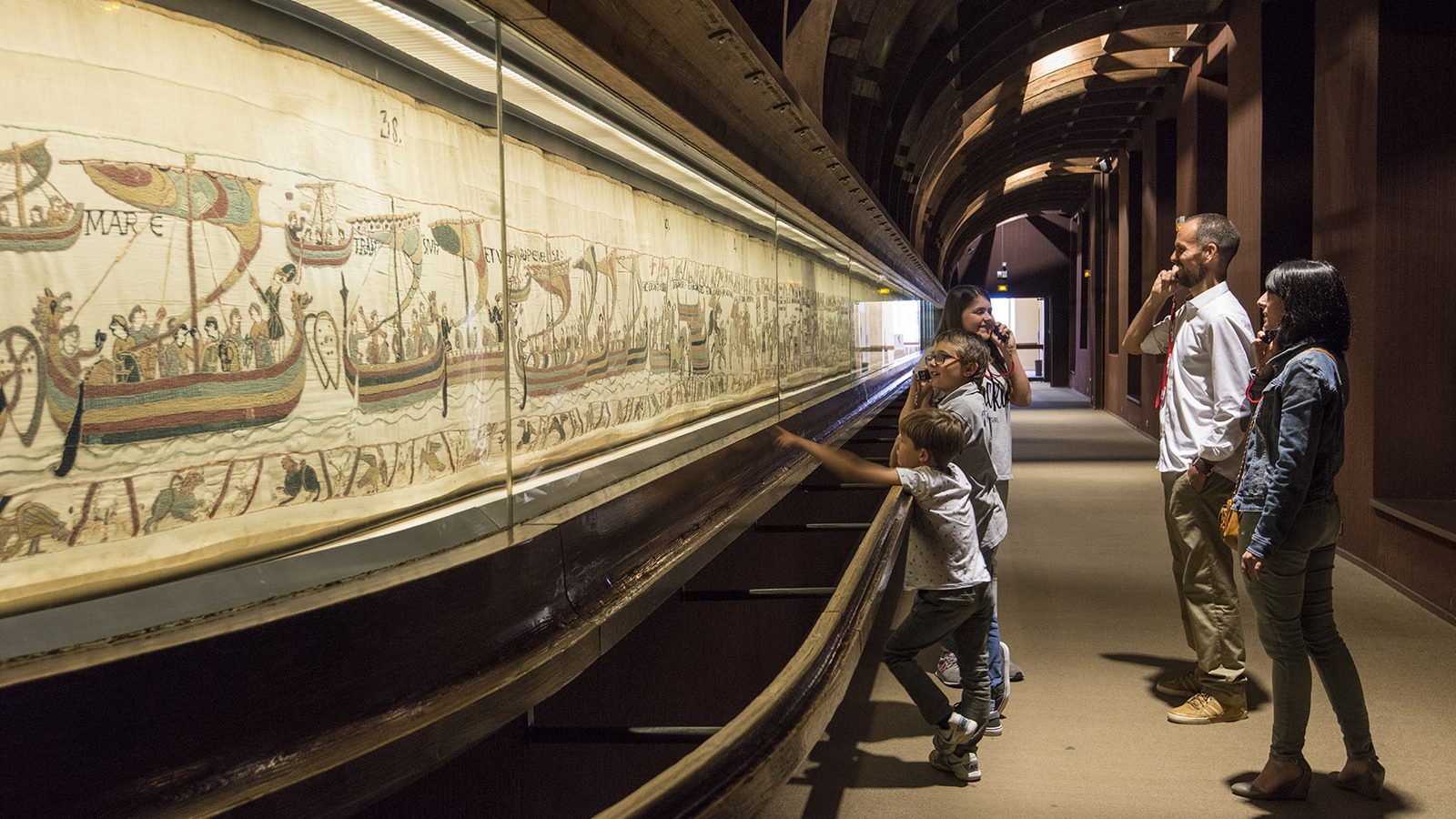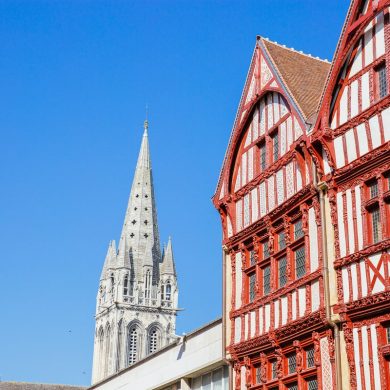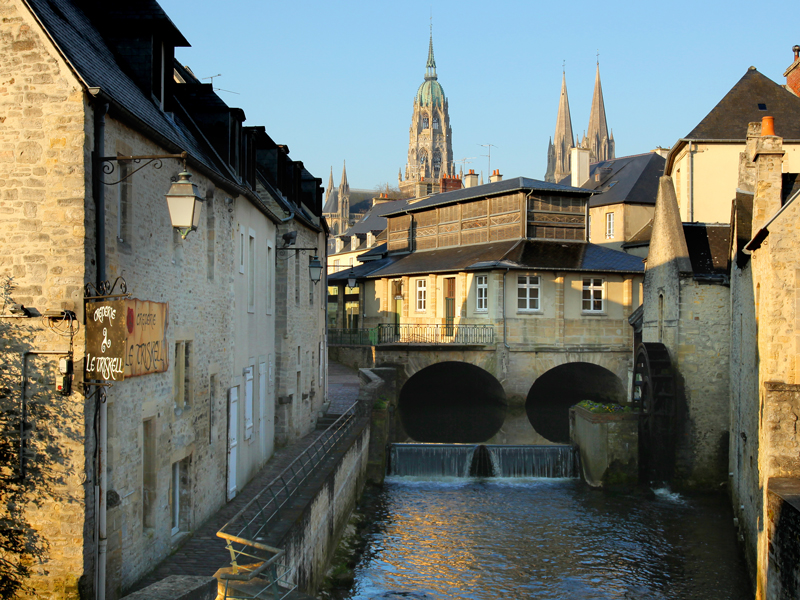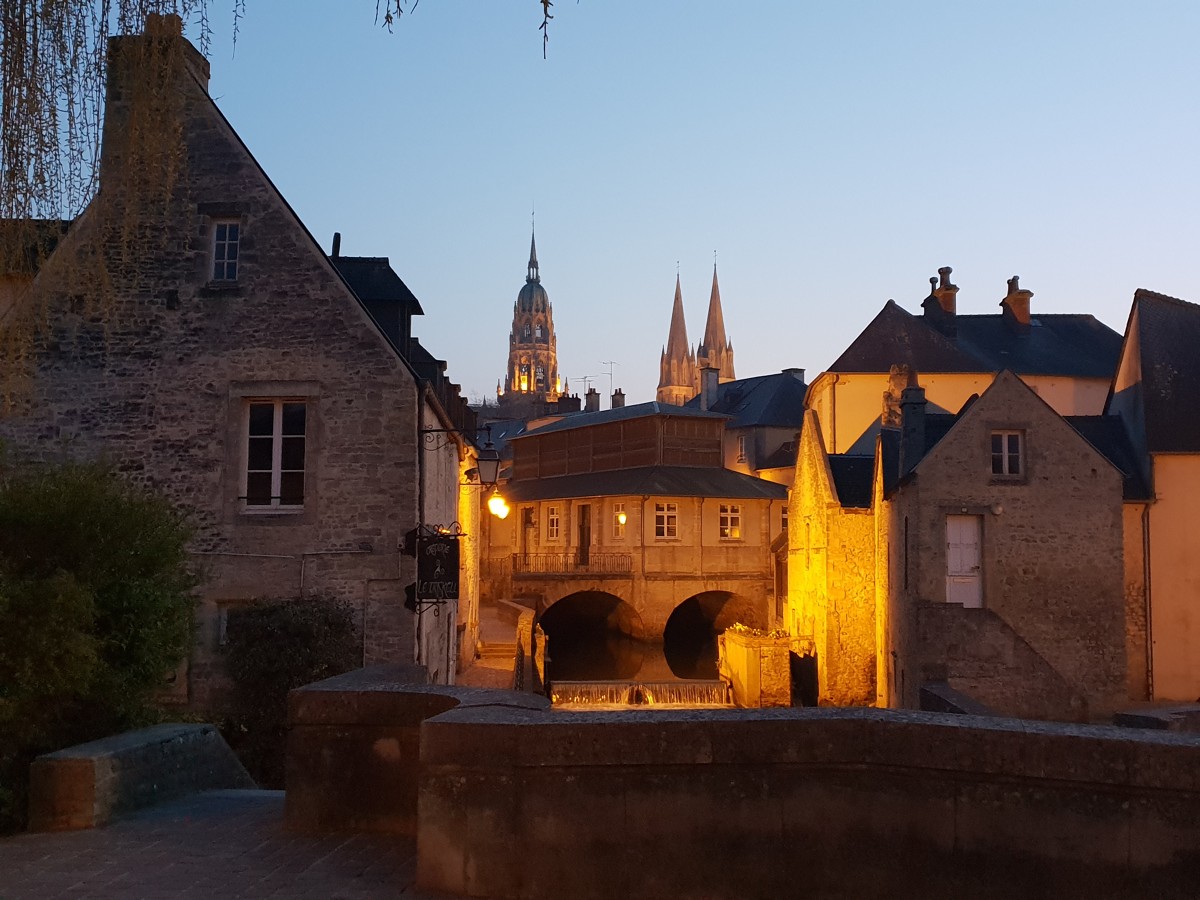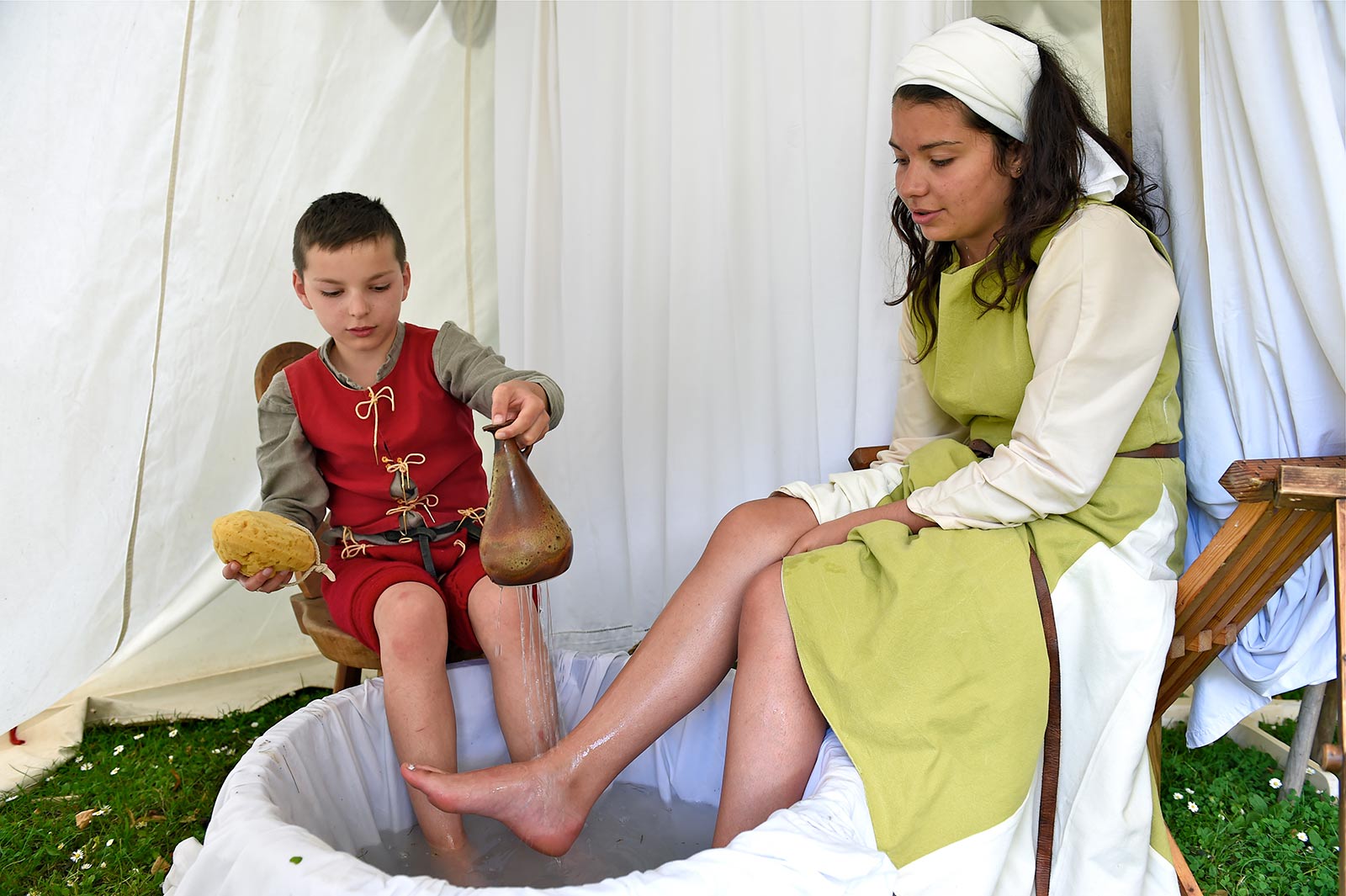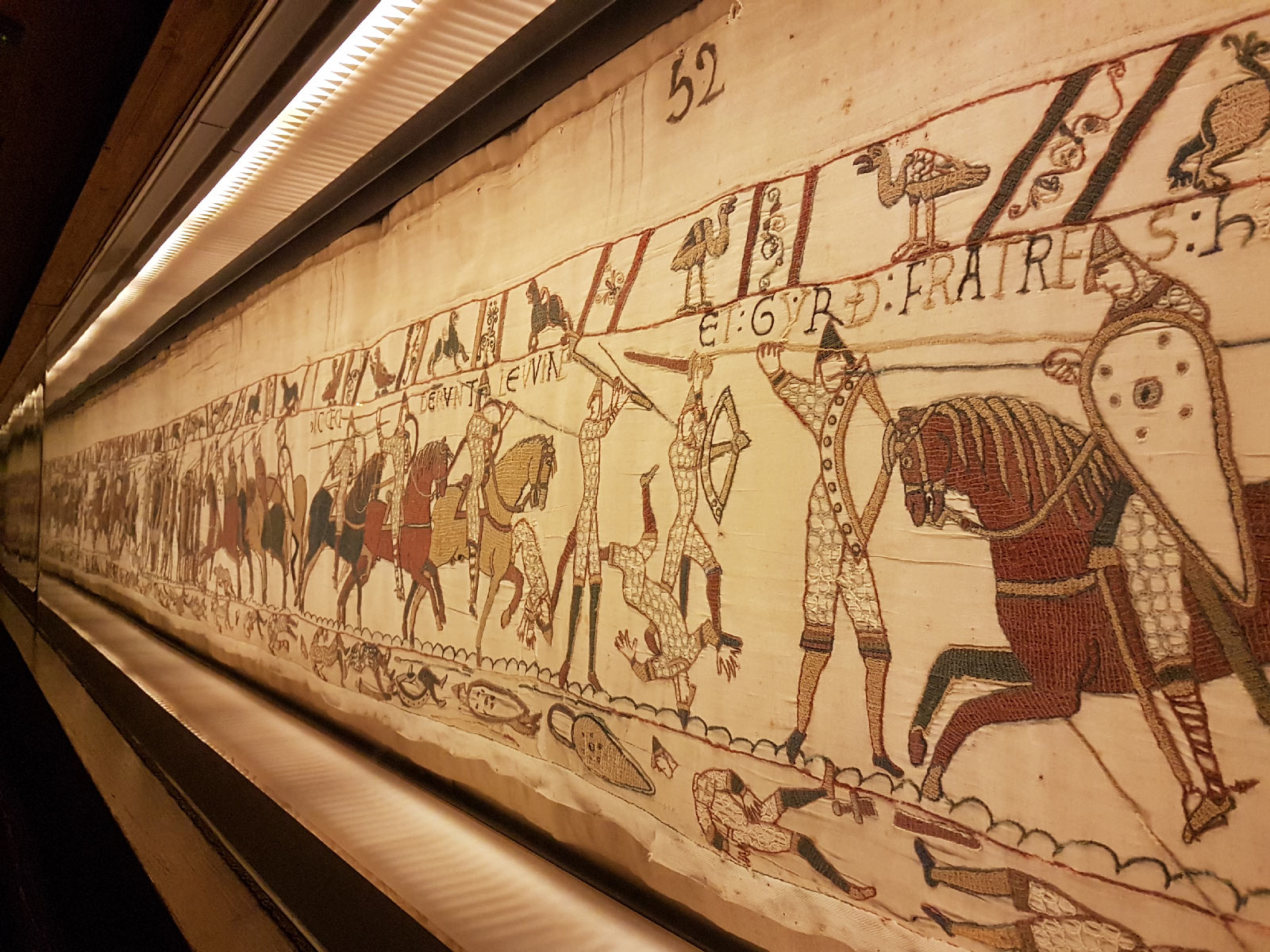Updated on 19 July 2024
Reading time: 5 minutes
Bayeux boasts a stunning historic centre as well as its world-famous, UNESCO-listed tapestry depicting the Norman conquest of England in 1066. The city had the good fortune to be swiftly liberated by the Allies in June 1944, but its war museum and British cemetery recall the sacrifices made in these parts.
HISTORIC ROOTS
Capital of the Bessin area, Bayeux has deep historic roots stretching back to Roman times, although what you see only goes back as far William the Conqueror’s reign – the Duke of Normandy, also King of England by this time, was even present at the cathedral’s consecration in 1077.
The Bayeux Tapestry was probably made in southern England. However, Bayeux, which has long been a wealthy trading town, also has a long tradition in many crafts, including lace and porcelain. This was also an important religious centre, and you will encounter the substantial buildings of former monasteries as you wander around the old town.
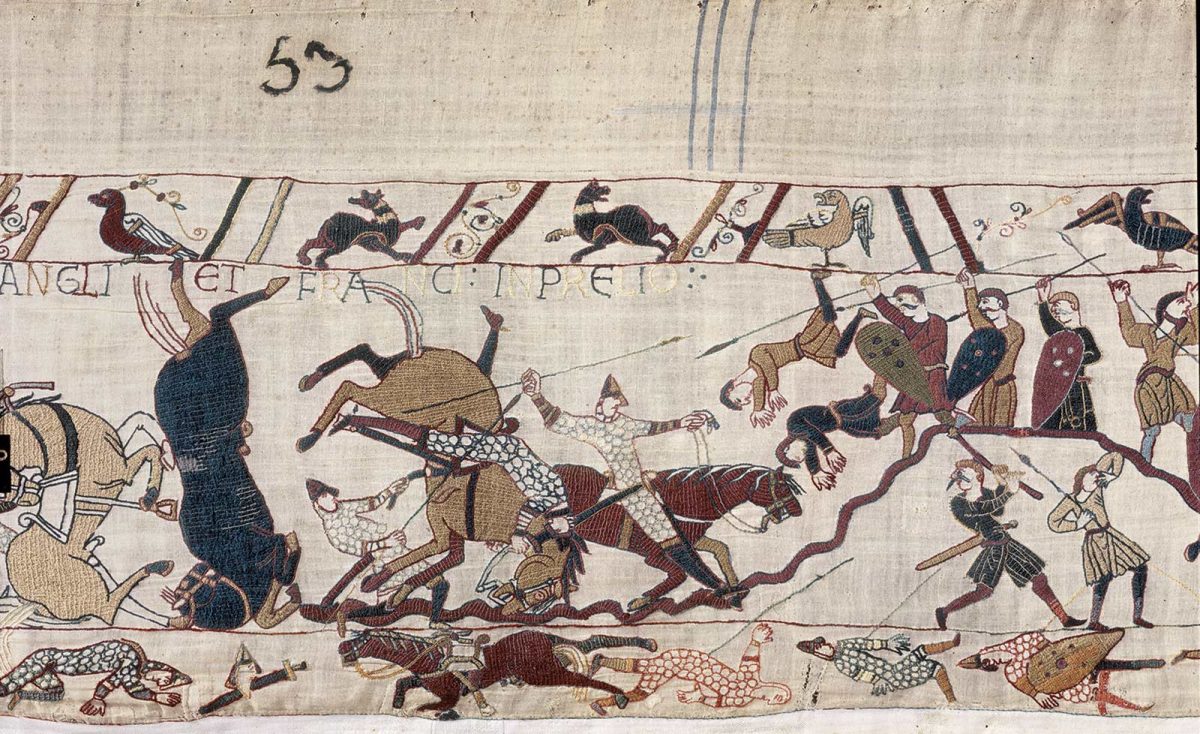
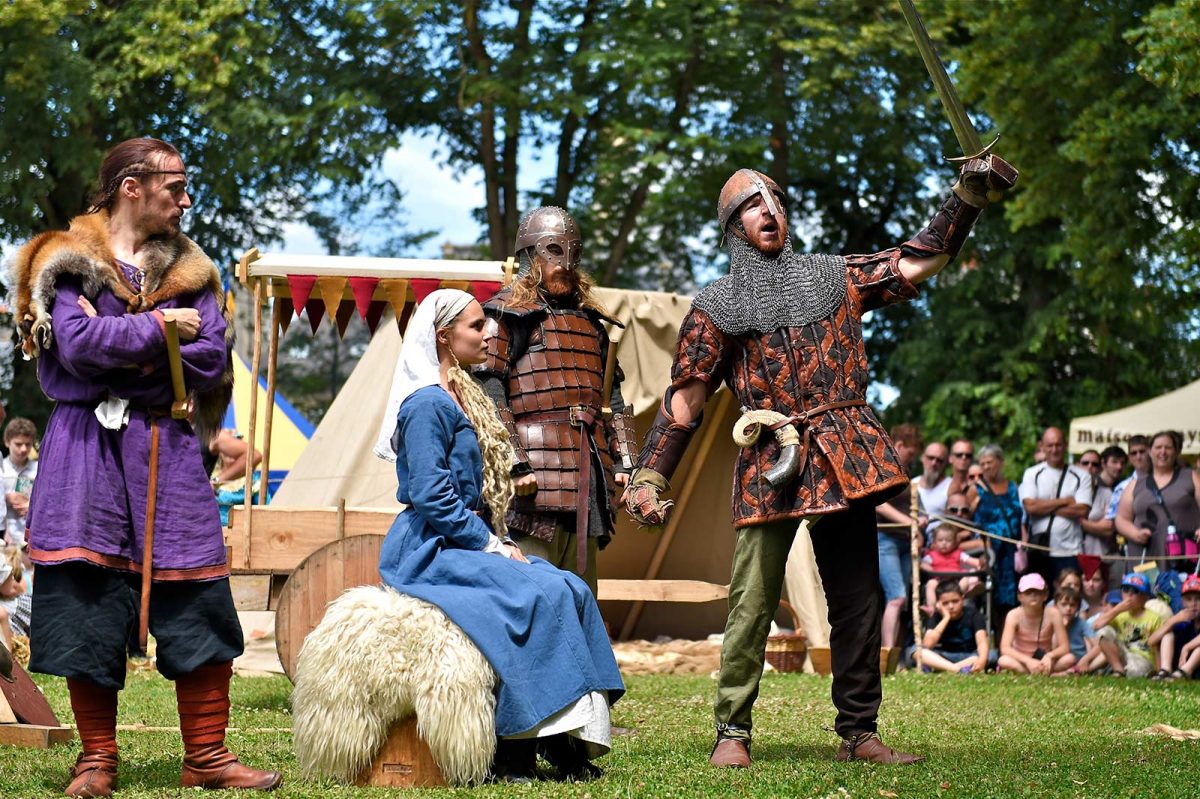
The famous BAYEUX TAPESTRY
A visit to the Bayeux Tapestry is the highlight for most tourists to the town. Bayeux’s tapestry dominates notions of the place, to be sure, but as you arrive here, it’s the splendid cathedral that dominates the scene and signals that you’re entering a glorious historic city. The grand bishop’s palace beside the cathedral has been turned into a museum. Spectacular historic houses nearby have been converted into fine restaurants and boutiques.
Following in the footsteps OF THE ALLIEs IN 1944
Bayeux was extremely fortunate to avoid most of the destruction and tragedy following D-Day that other Normandy towns suffered. For a very brief moment, Bayeux was capital of Free France and General Charles de Gaulle came to give a stirring speech here, arriving hot on the heels of the Allied forces in June 1944.
Bayeux has its own substantial war museum and British and Commonwealth War Cemetery, while the D-Day Landing Beaches and many further World War II museums and memorials are close-by.
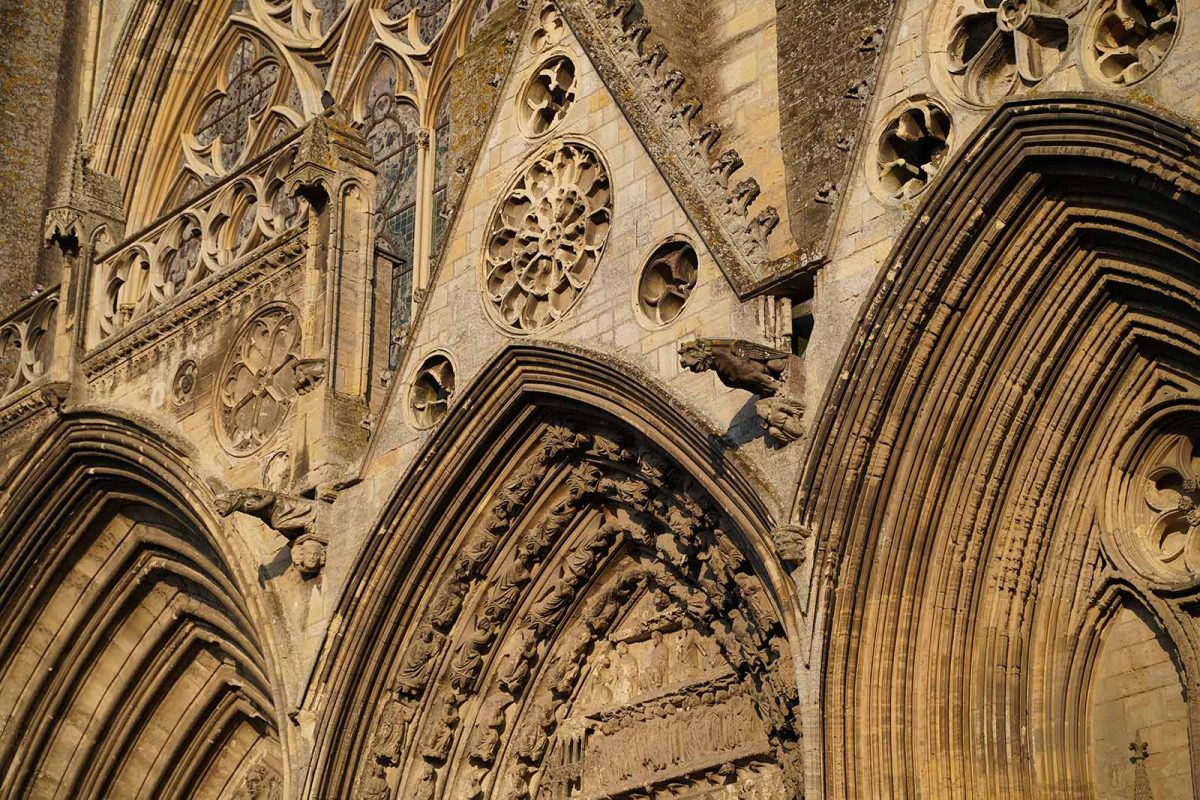
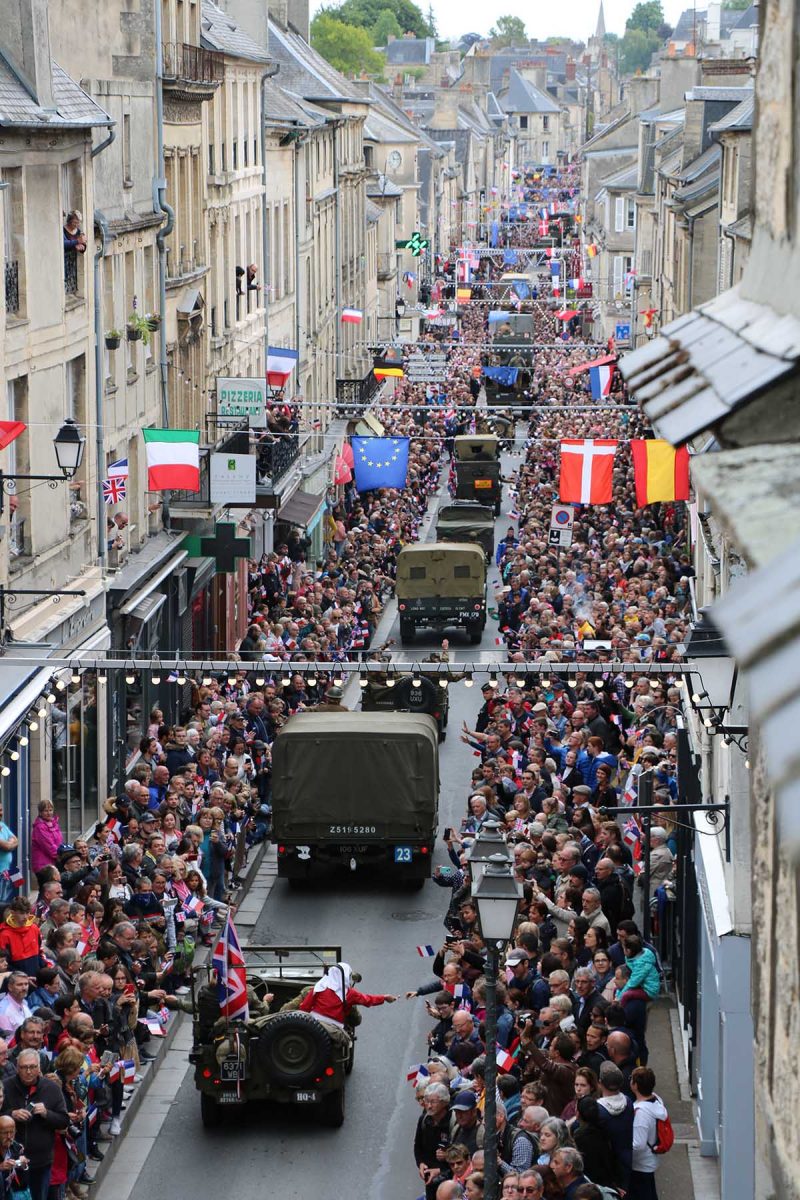
Don’t miss
The Bayeux Tapestry: Although images of the Bayeux Tapestry are familiar to so many of us, being able to see it with your own eyes proves a powerful experience. The scale of the work is staggering; it measures just over 70 metres (or 230 ft) in length. This exceptionally ambitious piece of craftsmanship was most likely ordered by William the Conqueror’s half-brother, the warring Bishop Odo of Bayeux. It presents a fascinating, detailed, Norman interpretation of Duke William of Normandy’s conquest of England.
The piece is in fact an embroidery, stitched on linen, rather than a tapestry, which would have been woven. It was probably made in southern England, but for display in Bayeux Cathedral. It is now on show in the imposing buildings of the town’s former Grand Seminary for training priests.
Audioguides in English help you get the most from the rooms setting the Bayeux Tapestry in context and from close observation of the piece itself, many of whose scenes are complicated to interpret.
Old Bayeux and the Notre-Dame Cathedral: Crowned by a magnificent copper-clad tower, full of exceptional details, Bayeux Cathedral is a truly remarkable religious building. The lower parts are Romanesque, dating from around Bishop Odo’s time. The decorations in the crypt and the arches along the nave are full of invention and delight. The upper parts were built in soaring Gothic style and are full of grace.
Musée Baron Gérard: Set in the former bishops’ palace beside the cathedral, this museum was beautifully renovated in 2013 to display regional history and art to best advantage.
Conservatoire de la Dentelle: Dedicated to preserving Bayeux’s 300 year’s old lace-making traditions , this conservatory, open to the public, occupies a lovely timber-frame building in the cathedral quarter.
Memorial Museum of the Battle of Normandy: This major war museum on the edge of Bayeux’s historic centre covers the 100 days of the Battle of Normandy in engrossing detail, going from D-Day to the complete liberation of Normandy.
Botanical Garden: This fine public garden was created by Eugène Bühler, a renowned 19th century French landscape gardener. Its pride and joy is a magnificent weeping beech, listed as one of France’s most remarkable trees.
Bayeux War Cemetery and Memorial: although Bayeux was spared fighting in the Battle of Normandy, this substantial cemetery close to Bayeux’s war museum is the largest British and Commonwealth cemetery in Normandy. In its beautifully kept grounds, some 4,144 Commonwealth soldiers killed elsewhere were given burial plots here. A splendid memorial honours the Commonwealth war dead.Over 400 German soldiers were also buried here, as well as small numbers of French and Polish Allied soldiers.
Le P’tit Train: Little tourist train operates from April to September, taking visitors meandering through Bayeux’s magnificent historic centre. The journey starts outside the tourist office.
Mémorial des Reporters: close to the Bayeux war cemetery, this memorial garden recalls reporters who have died since World War II in their efforts to cover further conflicts around the globe. Their names are carved on stone pillars.
Major events in Bayeux
Nearby
Useful information
Bayeux Bessin Tourist Office
bayeux-bessin-tourisme.com
